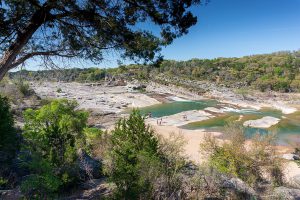Texas officially has 8 documented species of falcon.
Of those, 6 are regularly found in the state, while 2 species were one-hit wonders – with only a single individual ever documented.
Falcon Species in Texas
Falcons documented in Texas include:
- American Kestrel
- Merlin
- Peregrine Falcon
- Prairie Falcon
- Aplomado Falcon
- Crested Caracara
- Gyrfalcon
- Collared Forest-Falcon
Winter is when falcon diversity peaks in Texas, as migrant falcons move south where prey is more abundant. November through March is the best time to see them, especially along the coast.
What’s the Difference between a Hawk and a Falcon?
Falcons are different from hawks in their smaller size, slim build, and narrow pointed wings built for speed and agility. Hawks have more broad wings, and are proportionally more bulky, usually built for power rather than speed.
Hawks and falcons are both birds of prey, but are not closely related. Falcons are classified in the family Falconidae, while hawks are in the family Accipitradae.
American Kestrel
- Dark vertical facial lines
- Blue and red feathers visible on males
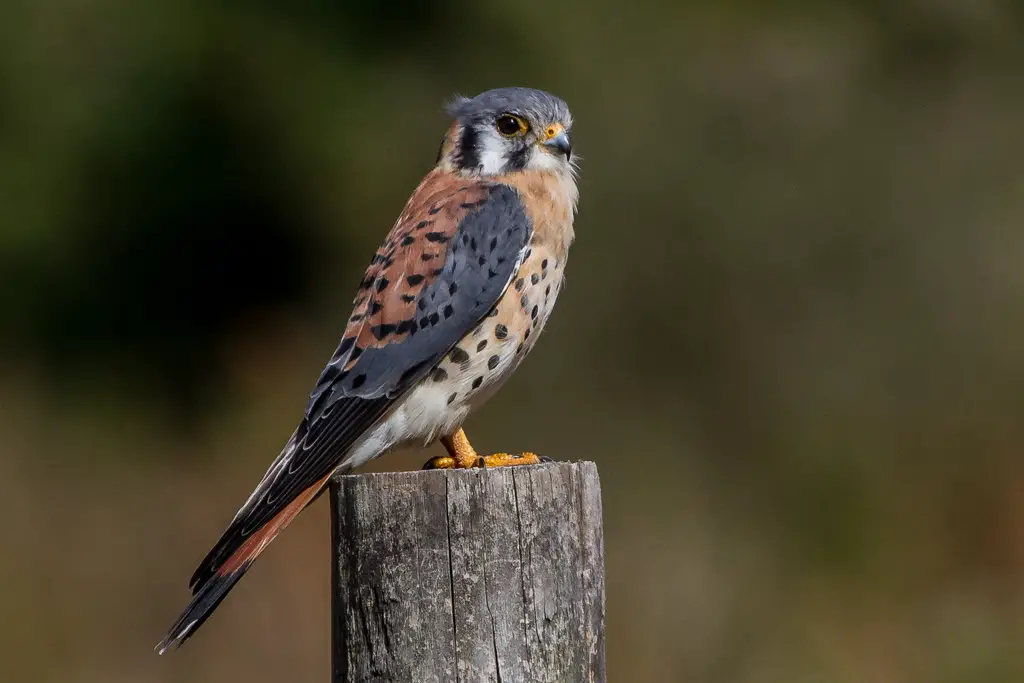

The American Kestrel is Texas’ smallest, most common, and most colorful falcon.
It’s often seen perched on power lines and poles as it scans open grasslands for small rodents and insects to dive on.

From late fall through early spring, American Kestrels are a common sight along suburban outskirts and in more rural areas. Anywhere with open fields can potentially host a kestrel or two.
Although the bulk of the population migrates north for the summer, northern parts of the state will see moderate numbers year-round. Summertime Kestrels can be found north of Dallas, in the Lubbock area and entire panhandle, and higher elevations in west Texas like the Davis Mountains.
Merlin
- Bold streaking on front
- Weak facail pattern
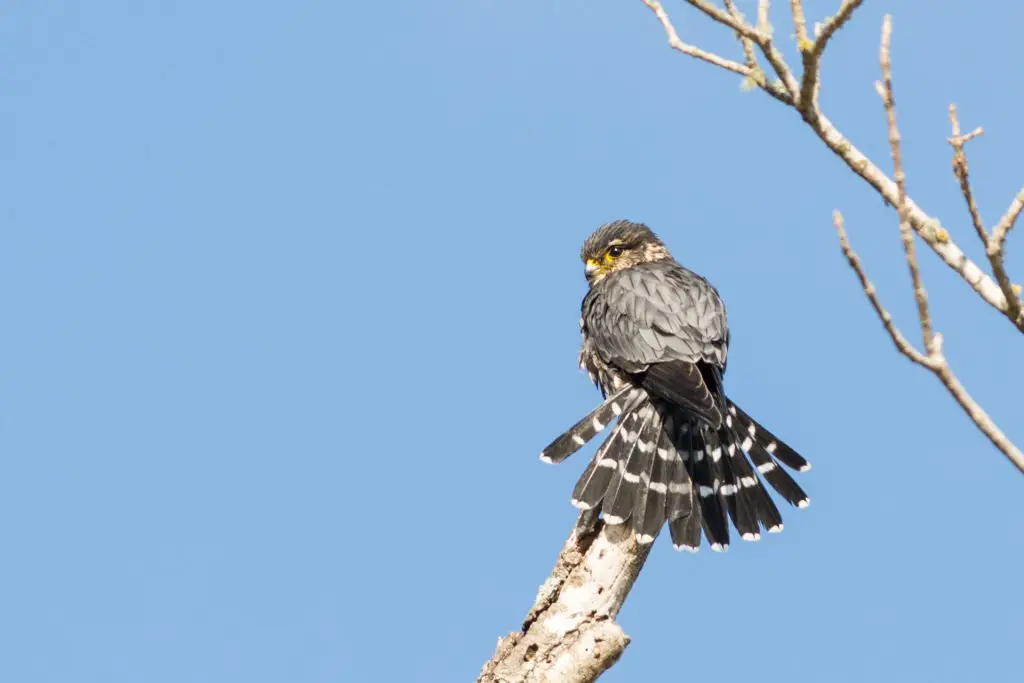
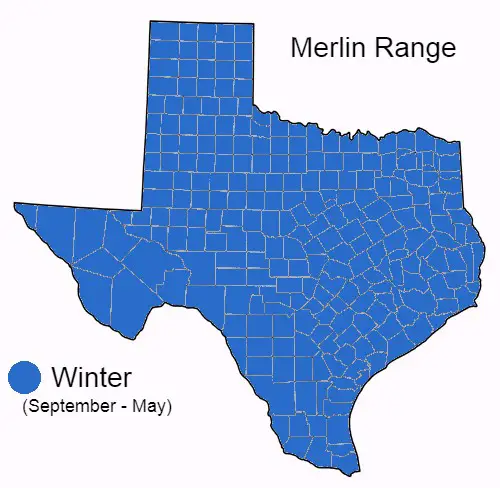
Merlins are the other small falcon in Texas, just barely larger than a kestrel. They differ in appearance by the Merlin’s more plain facial features, and more bold streaking on the breast and stomach.
Merlins prey mostly on smaller birds like swallows, sparrows, and small shorebirds like Least Sandpipers. Hunting other birds is a common behavior of the falcon family, and certainly isn’t unique to Merlins.
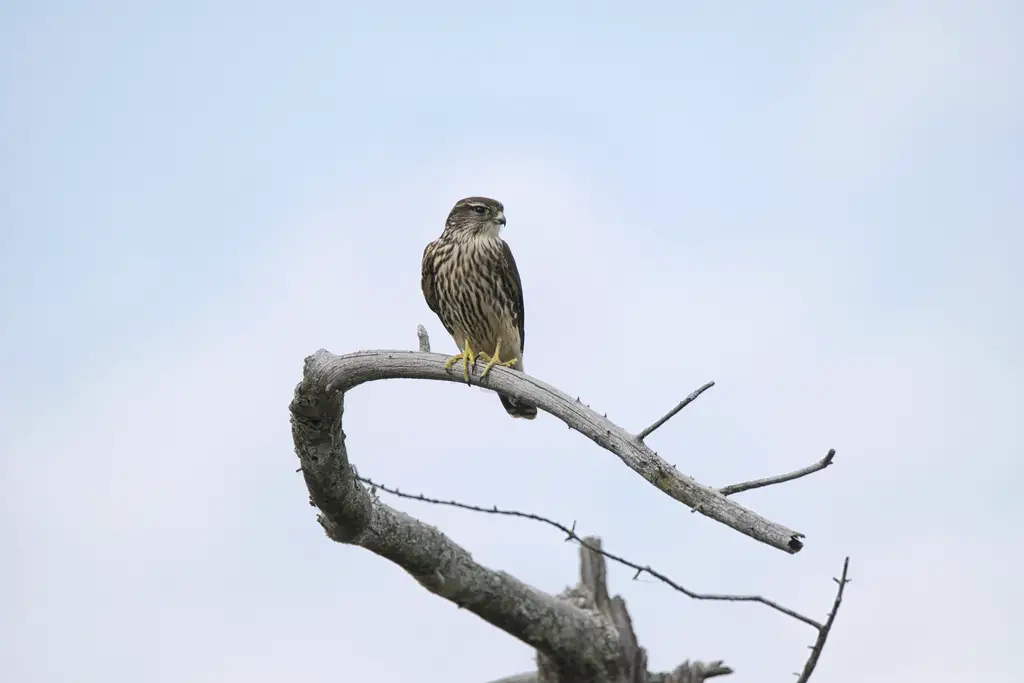
These small but fierce predators are most easily found along the coast during the cooler months of the year. Prey is abundant near coastal marshes and shorelines, which attract predators in higher than average abundance.
Favorite food items include sparrows, swallows, shorebirds, and almost any other bird smaller than the Merlin.
Away from the coast, Merlins are uncommon but regular. They may be seen hunting open spaces like an American Kestrel, but will also patrol open woodlands in search of food.
Peregrine Falcon
- Dark, bold facial pattern
- Large falcon, twice the size of a kestrel
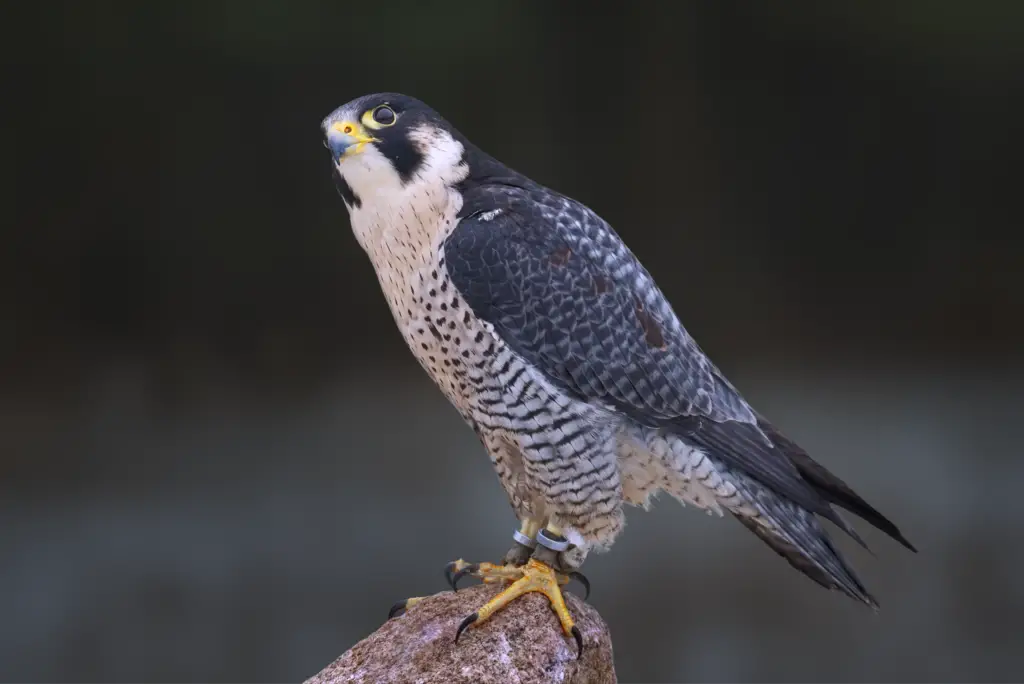
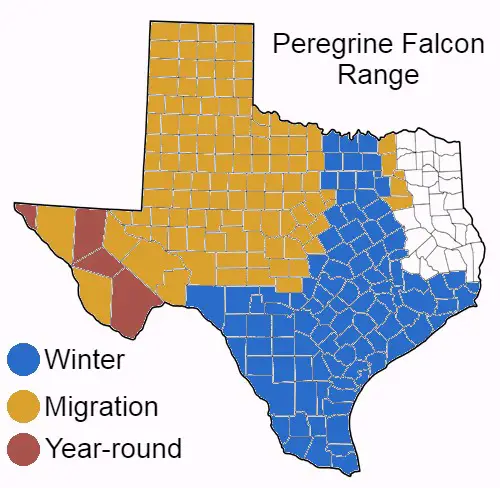
The Peregrine Falcon is easily the most iconic species in the falcon family. It’s actually a global species, found on all continents except Antarctica.
Peregrine Falcons are also the fastest animal on the planet. When dive bombing prey targets like a duck or dove, their free fall dives can reach high speeds of over 200 mph. They prey animal is often killed on impact from the sheer force of contact.
Identifying a Peregrine Falcon when you see one begins with the size and shape. The wings are narrow and clearly pointed at the tips, lacking any spread out feather tips, or “fingers”, that other raptors like hawks and vultures will show.
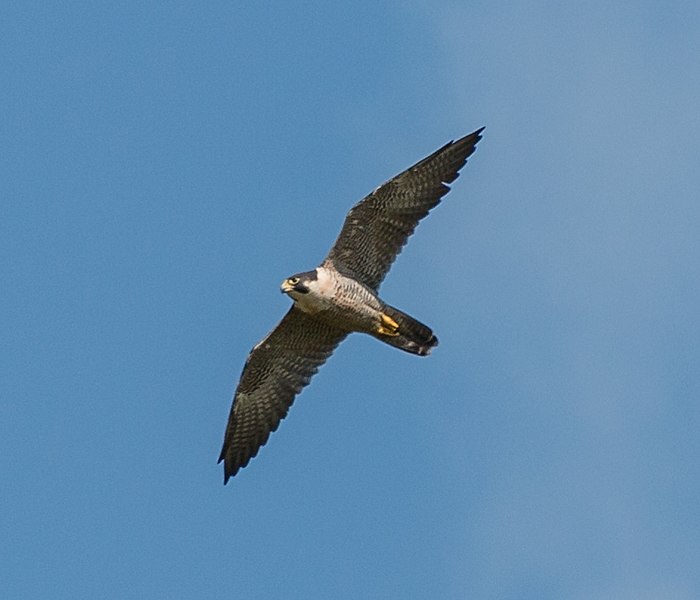
Their size is noticeably larger than an American Kestrel or Merlin, with nearly double the wingspan. Most adult Peregrines in Texas will be medium to dark gray on the back, separating them from other falcons.
In Texas they can appear anywhere in the state, but numbers are highest along the Texas coast during winter months. Large numbers of shorebirds and ducks there provide more than enough food for these agile and speedy raptors.
Several small breeding populations exist around the state. The two most well know locations are Big Bend National Park, in the Chisos Mountains and in Santa Elena Canyon, as well as the University of Texas Tower in downtown Austin.
The female Peregrine Falcon that nests in the UT tower is nicknamed Tower Girl, where she has attempted to raise young each year since 2015. She can often be seen on the FalconCam, a live feed of the nest (link to FalconCam).
Prairie Falcon
- Brown-white color contrast in the face
- Somewhat weak facial pattern
- Back and wings either light brown or light gray
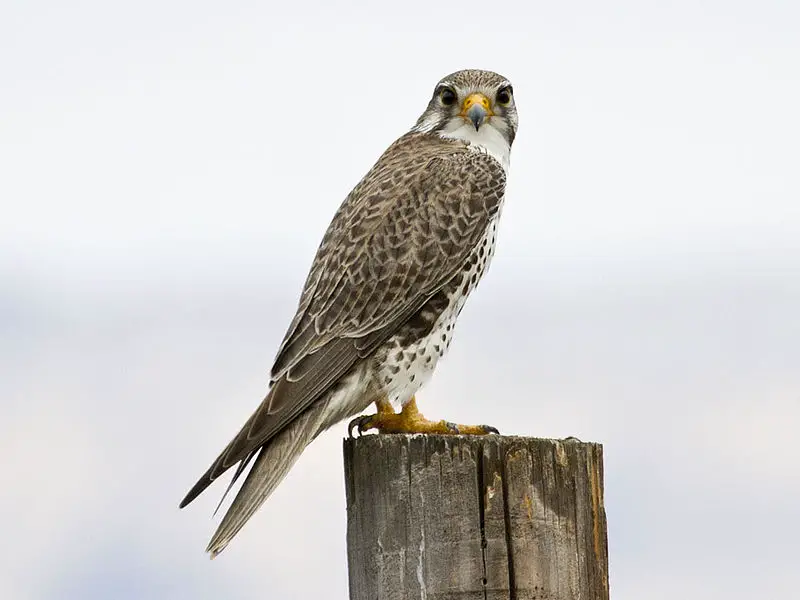
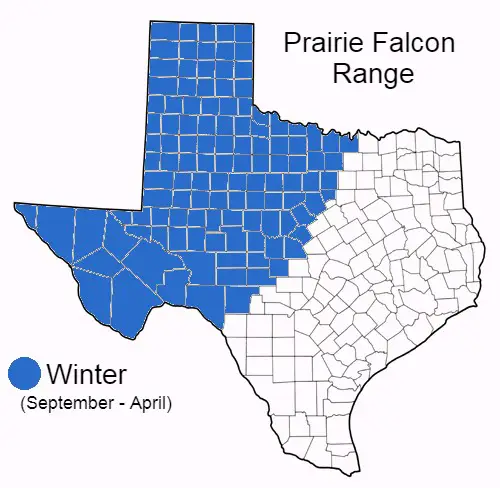
The Prairie Falcon is the slightly smaller cousin of the Peregrine Falcon, and you can guess their favorite habitat from the name.
Their pale and light overall color helps camouflage them against fields of grass and dirt while they hunt. Coming in fast and low, sometimes only a foot or two above the ground, these falcons surprise their prey as they attack from behind or the side.
Their favorite prey items include rodents like field mice and prairie dogs, small birds like sparrows and Horned Larks, and sometimes snakes and lizards.

If birders want to see a Prairie Falcon in Texas then the Panhandle is the place to be. During winter months, Prairie Falcons appear in the greater Lubbock and Amarillo areas in healthy numbers.
Spend some time driving open fields around the edge of towns or along rural roads. Look for raptors larger than a kestrel but smaller than a hawk. Prairie Falcons are most noticeable either perched on a power line pole, or flying low and fast over the ground in a large agriculture field.
West Texas also has a decent Prairie Falcon population during winter. Many reports surround the Davis Mountains, like near Balmorhea, Ft. Davis, Marfa, and Valentine. Dell City near the Guadalupe Mountains is also good for these raptors.
Aplomado Falcon
- Horizontal white strip above eye
- Only found along the coast, sometimes far west Texas

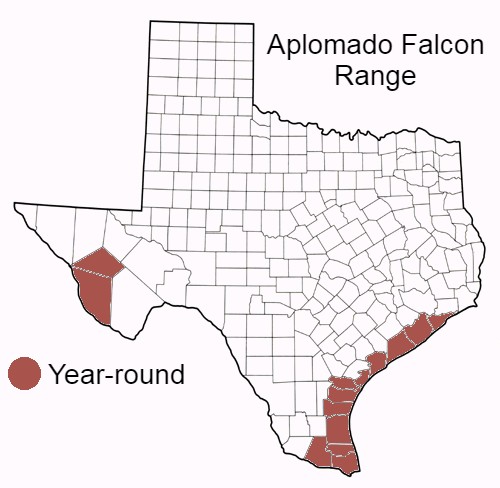
The Aplomado Falcon is listed as endangered in the United States, and is an interesting Texas conservation story.
A native to south Texas, and far west in the Trans-Pecos region, this species mostly disappeared by the 1930s. Overgrazing of grasslands by livestock and grassland encroachment of shrubby species like mesquite trees are suspected causes of the population crash.
In the late 1980s, Aplomado Falcons were brought in from outside of Texas so they could be captive bred and then released near Brownsville, and on the coast near Corpus Christi.
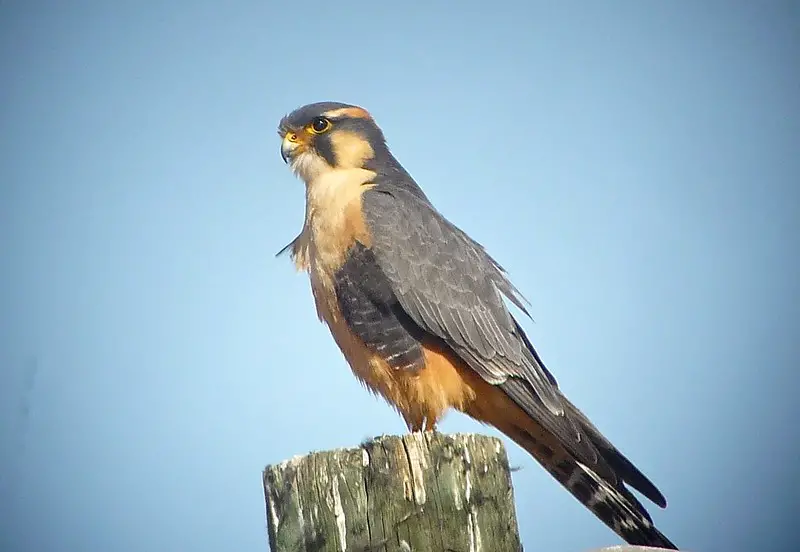
Today roughly 100 Aplomado Falcons survive on their own in south and coastal Texas, where birders can see them from roadsides.
The best places to see them are:
- Port Isabel Road near Brownsville
- East Ocean Boulevard, just inland from South Padre Island
- Highway 361 on Mustang Island, between Corpus Christi and Port Aransas
Crested Caracara
- Black and white, with an orange face
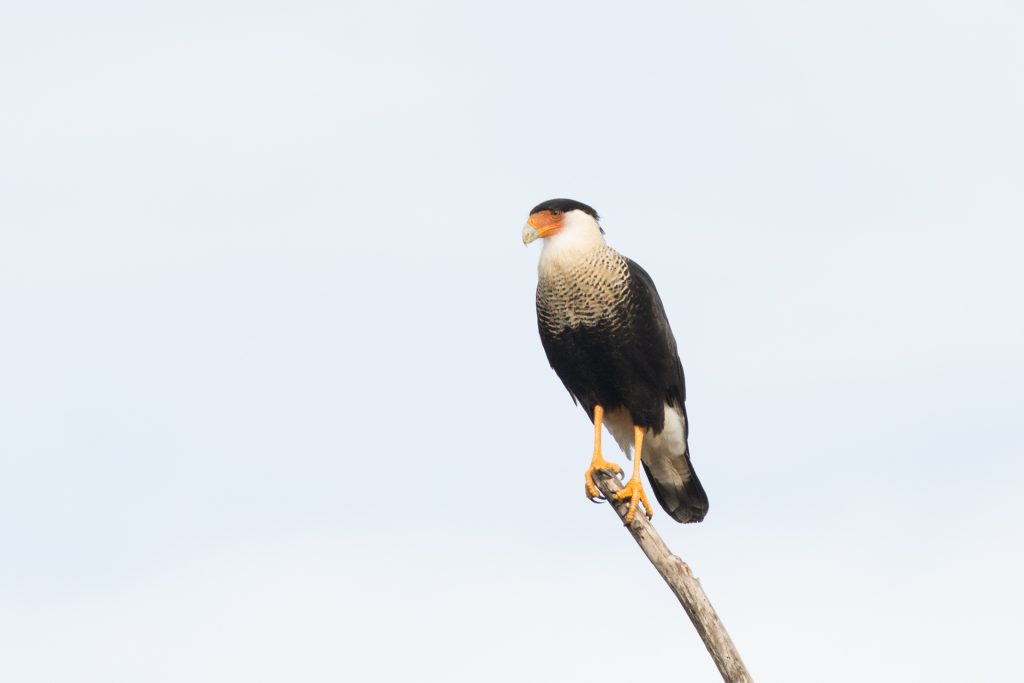
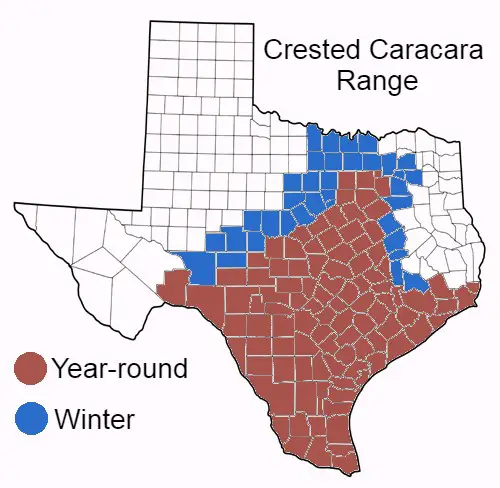
Often nicknamed the “Mexican Eagle”, the Crested Caracara is the oddball in the falcon family. It looks different, it flies differently, and it’s noticeably bigger.
To get food, it often uses its size to bully other birds and steal food, rather than actively hunt live prey like other falcons. They’re known to raid nests of smaller birds, and feed on roadkill for easy food.
Mockingbirds and Scissor-tailed Flycatchers are often seen mobbing Caracaras, pecking at their heads and backs, trying to annoy these predators to the point of leaving the vicinity.
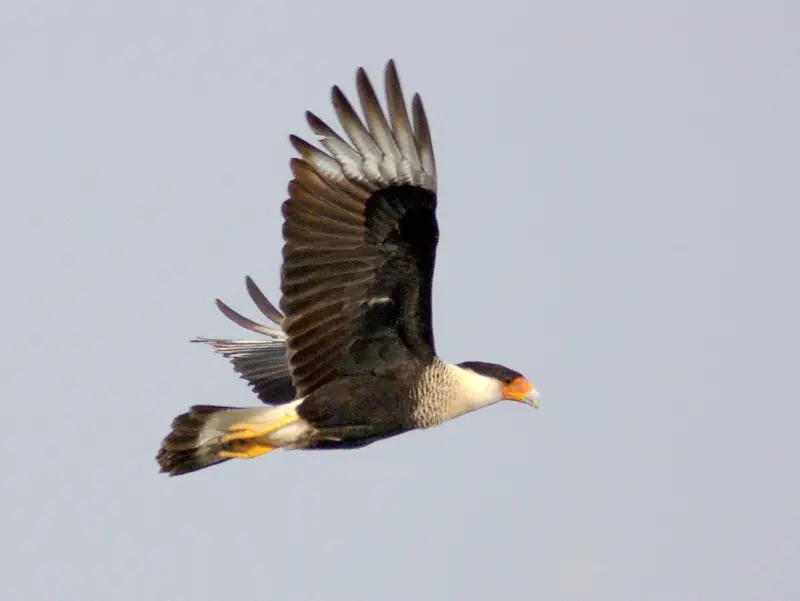
Crested Caracaras were once considered a south Texas species, but they’ve been expanding steadily north for several decades. They’re now a common sight all along the coast up to Houston, into central Texas around Austin, and are occasionally even reported in Oklahoma.
Numbers are most abundant south of San Antonio and along the coast, so if you wish to see one, those are good places to be.
Gyrfalcon
Only one Texas record exists
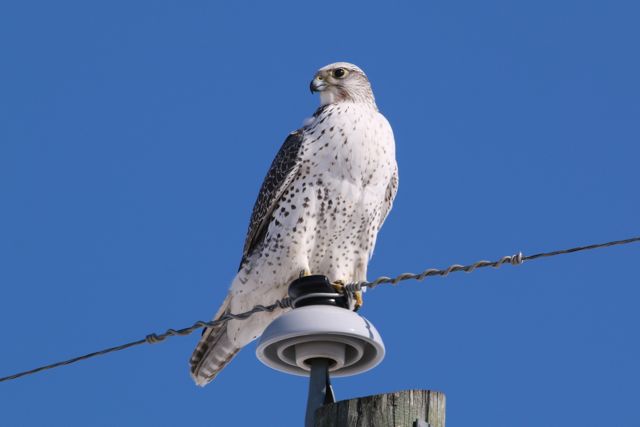
The Gyrfalcon is a predator of the arctic, normally restricted to Canada, Alaska, and sometimes the northern states. It’s certainly not what bird watchers would think of as a Texas species.
During late winter of 2002, the first Texas record of this species appeared in Lubbock. It was seen repeatedly perched on a water tower, until about 2 months later when it left, never to be seen again.
Collared Forest-Falcon
- Only one Texas record exists
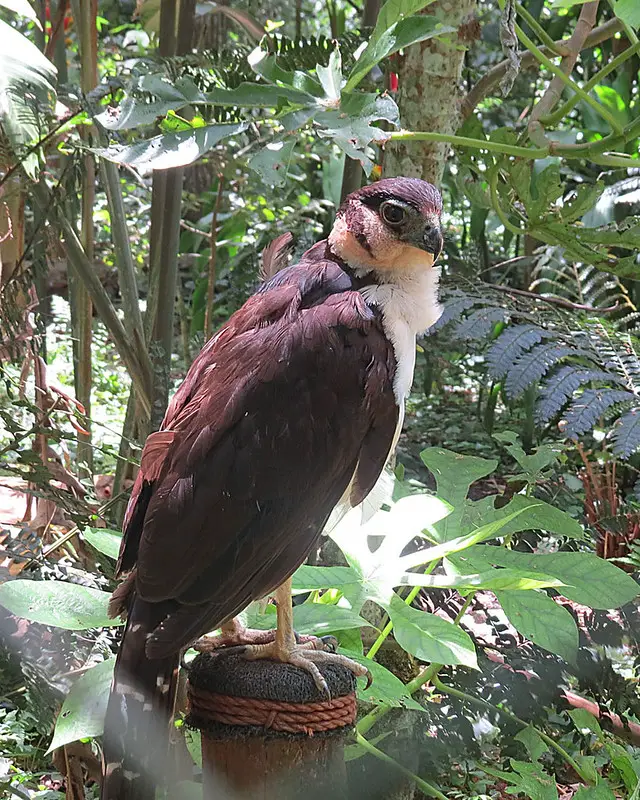
Collared Forest-Falcon is a tropical species, a hunter of rainforest woodlands. It was never expected to show up in Texas or the United States, but in 1993 one individual surprised birders everywhere.
A single individual was discovered in Bentsen Rio Grande Valley State Park, right on the Mexico border, and stayed all through February. The rarity was seen by at least several dozen birders, until it disappeared at the end of the month.
Now, nearly twenty years later, a Collared Forest-Falcon has yet to reappear north of the Mexico border.


